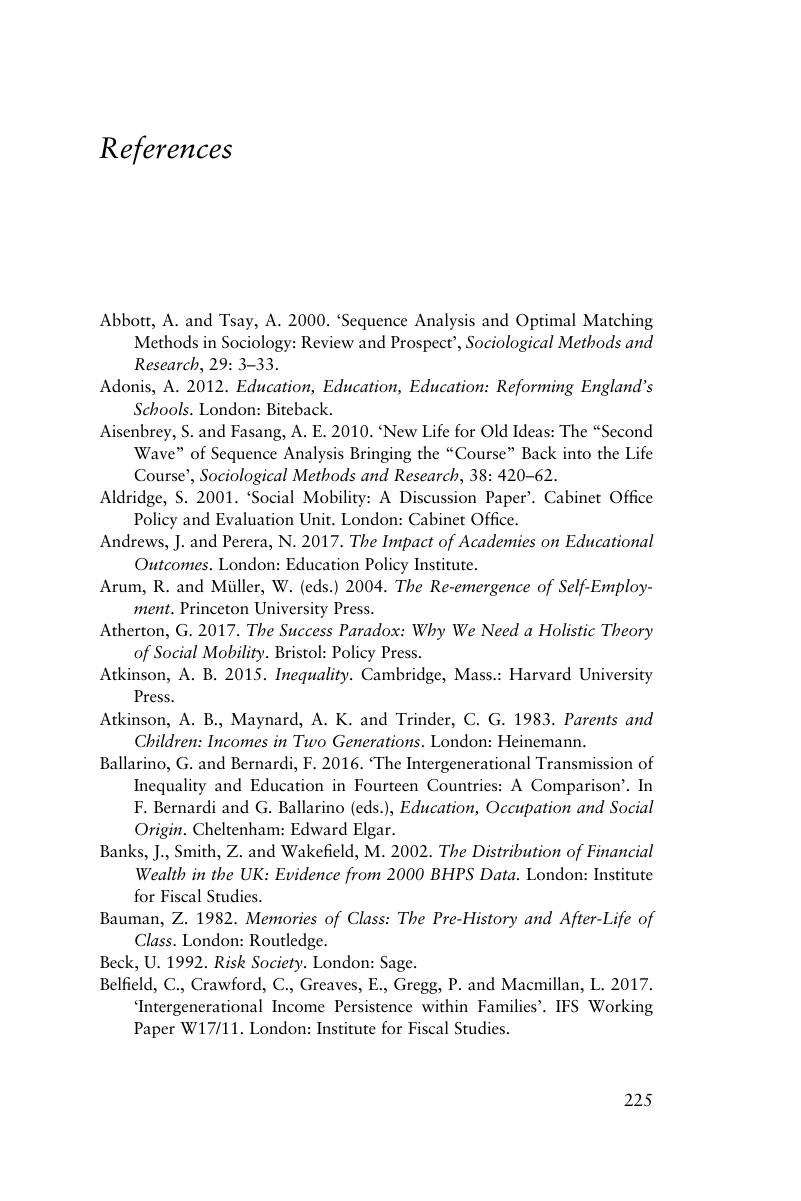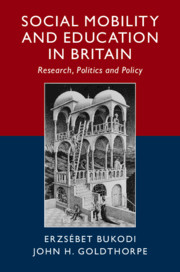Book contents
- Social Mobility and Education in Britain
- Social Mobility and Education in Britain
- Copyright page
- Contents
- Figures
- Tables
- Acknowledgements
- Introduction
- 1 Social Class as the Context of Social Mobility
- 2 Class Mobility in Absolute Terms: The End of the Golden Age
- 3 Class Mobility in Relative Terms: Resistance to Change
- 4 The Pattern of Social Fluidity within the Class Structure: Hierarchy, Inheritance and Status Effects
- 5 Education and Social Mobility: The OED Triangle
- 6 Social Origins, Ability and Educational Attainment: Is there a Wastage of Talent?
- 7 Education and the Labour Market: Is Education Now Class Destiny?
- 8 Origins versus Education: Are there ‘Glass Floors’ and ‘Glass Ceilings’?
- 9 Lifelong Learning: Compensation or Cumulative Advantage?
- 10 Social Mobility in Britain in Comparative Perspective: Is Britain a Low Mobility Society?
- Conclusions
- References
- Index
- References
References
Published online by Cambridge University Press: 06 December 2018
- Social Mobility and Education in Britain
- Social Mobility and Education in Britain
- Copyright page
- Contents
- Figures
- Tables
- Acknowledgements
- Introduction
- 1 Social Class as the Context of Social Mobility
- 2 Class Mobility in Absolute Terms: The End of the Golden Age
- 3 Class Mobility in Relative Terms: Resistance to Change
- 4 The Pattern of Social Fluidity within the Class Structure: Hierarchy, Inheritance and Status Effects
- 5 Education and Social Mobility: The OED Triangle
- 6 Social Origins, Ability and Educational Attainment: Is there a Wastage of Talent?
- 7 Education and the Labour Market: Is Education Now Class Destiny?
- 8 Origins versus Education: Are there ‘Glass Floors’ and ‘Glass Ceilings’?
- 9 Lifelong Learning: Compensation or Cumulative Advantage?
- 10 Social Mobility in Britain in Comparative Perspective: Is Britain a Low Mobility Society?
- Conclusions
- References
- Index
- References
Summary

- Type
- Chapter
- Information
- Social Mobility and Education in BritainResearch, Politics and Policy, pp. 225 - 239Publisher: Cambridge University PressPrint publication year: 2018

